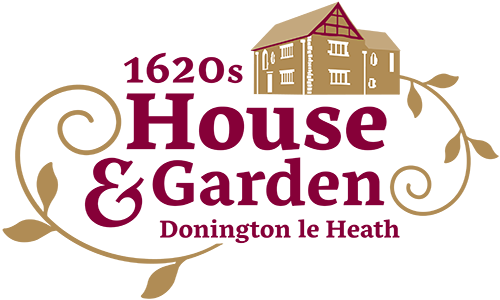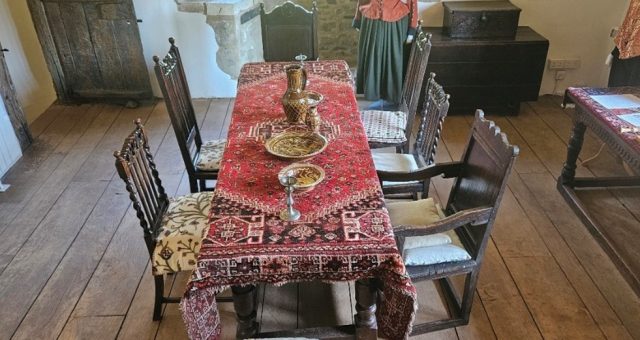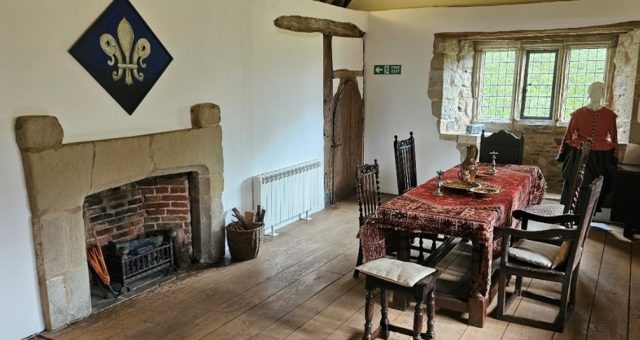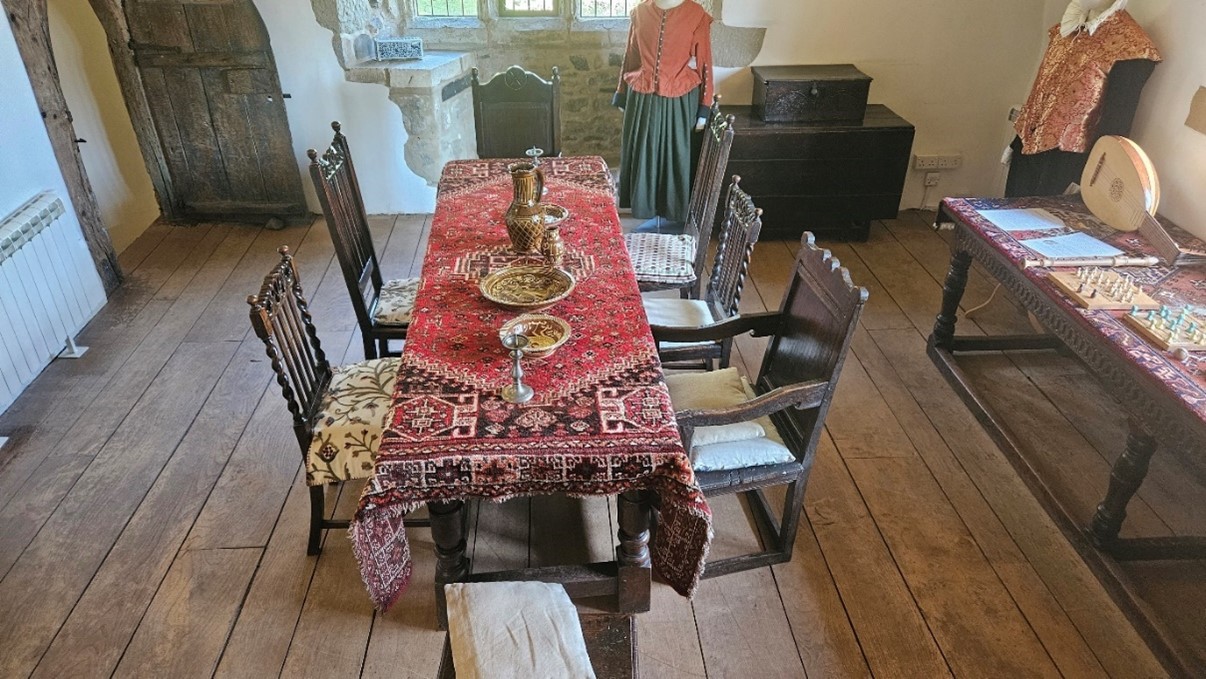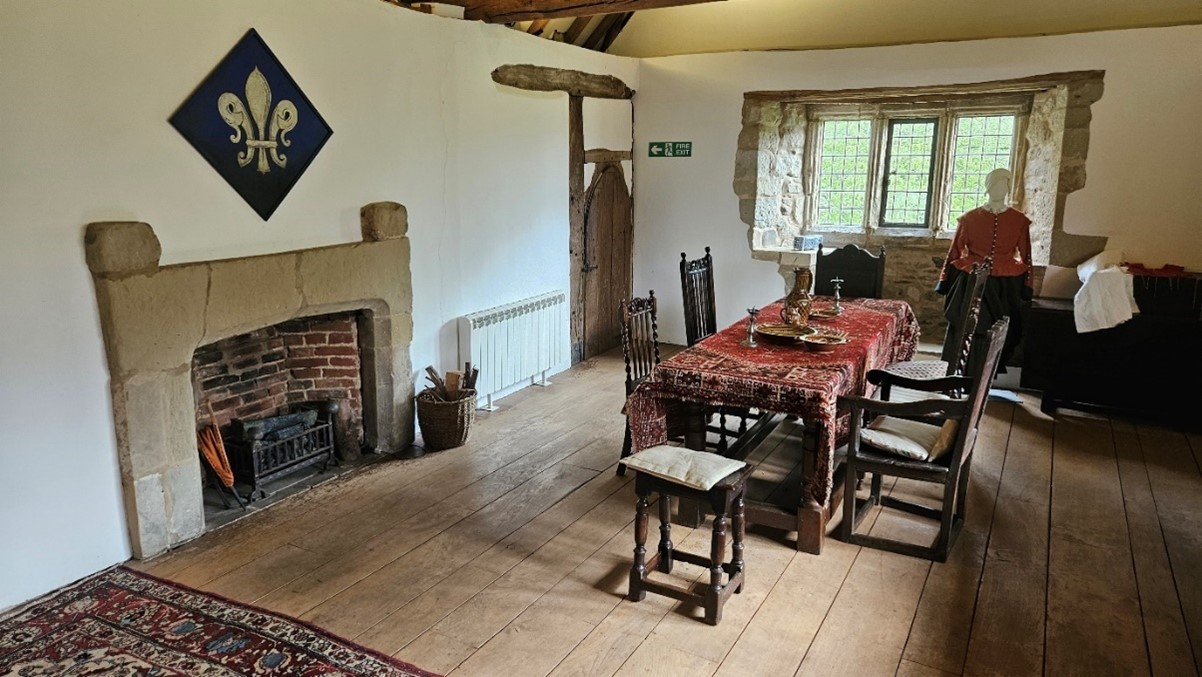The Great Chamber
This large room was the place where the family spent their time indoors. The rich rugs made this a relatively cosy room by 17th century standards.
While Mr Digby was in his study, Mrs Digby may have spent her time reading, doing needlework or spinning using the light from the large windows. The family may have enjoyed playing games, music and dancing here.
When guests came to visit, it would become the formal dining room. The table would be laid with a fine linen cloth, newly fashionable slipware crockery and the finest glasses, all brought out of the large court cupboard. For cutlery, silver or pewter spoons and knives were used. Forks were still a relatively exotic foreign invention. Although a young fashionable man like Mr Digby may have owned a two-pronged fork, it would have been a valuable possession that he would have carried with him. A lidded salt cellar, known simply as a ‘salt’ would be placed at the centre of the table, as salt was still precious and expensive in the 1620s.
As in the lobby, there would have been a ceiling in this room so the impressive roof timbers you can see today would have been concealed by this. The servants living quarters would have been positioned above these two rooms.
Most of the architectural features in this room, including the roof trusses, date from the early 17th century. The fireplace dates from the 17th century renovations too, replacing a larger medieval one.
Go through the door at the far left-hand side of the Great Chamber to
